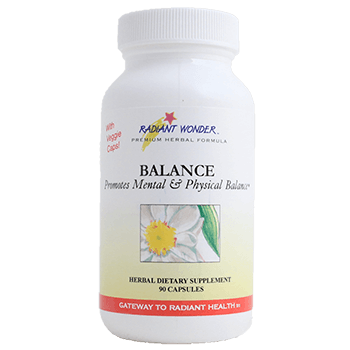What is Celiac Disease?
Celiac disease is a chronic autoimmune disorder. An autoimmune disorder is when your immune system defends your body against disease. In an autoimmune disorder, that system goes into overdrive and may mistake anything ‘foreign’ in your body as a threat and mount an attack on it.
If you have celiac disease and you eat anything containing gluten, your immune system will attack it when it passes into your small intestine. This is what gives rise to distressing digestive system symptoms and is what may cause long-term damage to the lining of your small intestine.
Once your small intestine is inflamed or damaged, your body is less able to absorb nutrients. In the beginning stages you may lose or gain weight. However, as this disease progresses, it may lead to malnutrition and unhealthy weight loss.
Who Does Celiac Disease Affect?
It affects children and adults who have a genetic predisposition to it. This means that if you have a first degree relative (parent or sibling) with celiac disease, then you are up to 10% more likely to suffer with it.
Celiac disease is common worldwide. According to the National Institute of Diabetes and Digestive and Kidney Diseases, about 1 out of every 133 Americans has celiac disease. Up to 17% of female sufferers are diagnosed with celiac disease during pregnancy, when severe symptoms may appear. However, celiac disease is only one aspect of a range of possible manifestations of gluten reactions.
How is Celiac Disease Diagnosed?
There are around 300 possible symptoms of celiac disease and the symptoms vary from person to person. This can lead to a delay in diagnosis, especially if your Doctor is not well versed in Digestive System illnesses.
There are also many myths about celiac disease which don’t help.
Celiac disease is often misdiagnosed as Irritable Bowel Syndrome or Lactose Intolerance. It’s therefore imperative to get a proper diagnosis.
A simple blood test called a Serologic test can measure the amount of proteins that your immune system is making. If the serologic test is positive, the next step is a biopsy of the small intestine. This is lined with finger-like projections called villi. If the villi are damaged and the serologic test is positive then a diagnosis of celiac disease is made. Whether you have a gluten allergy, gluten intolerance or celiac disease, the right Healthy Living Program will help you to renew and recharge.
Symptoms of Celiac Disease
Celiac disease is now classified in three distinct groups, depending on the symptoms.
Classical Celiac Disease:
Mostly gastrointestinal symptoms such as diarrhea, malnutrition, weight loss, steatorrhea (the excretion of abnormal quantities of fat with the faeces owing to reduced absorption of fat by the intestine) and edema (water retention) secondary to hypoalbuminemia (abnormally low levels of albumin in the blood).
Nonclassic Celiac Disease:
Gastrointestinal symptoms (abdominal pain, gastroesophageal reflux symptoms, vomiting, constipation, irritable bowel syndrome–like symptoms, distension, bloating, etc.) or very few or mild symptoms.
Asymptomatic Celiac Disease (also formerly known as silent celiac disease):
No symptoms at all despite having lesions in the small intestine that are clearly caused by celiac disease.
Gluten Allergy vs Gluten Intolerance
Gluten Allergy
The body’s inability to digest or break down the gluten protein found in wheat and certain other grains. The allergy may affect the skin, respiratory tract or gastrointestinal tract.
Gluten Intolerance (Also known as a Gluten Sensitivity)
This is a gluten-related disorder suffered by people who have gluten reaction symptoms, but have had tests which ruled out both allergies and autoimmune disorder.
If you have gluten intolerance or sensitivity and you eat gluten, your small intestine does not become damaged. However, you would get gastrointestinal symptoms.
In addition, gluten sensitive people often suffer debilitating fatigue and headaches.
What is Gluten?
Gluten is a mixture of two proteins – gliadin and glutenin – that are naturally present in cereal grains. Flours containing gluten are commonly used for making bread and cakes because they have helpful properties that come into play during the baking process.
During the mixing of batters and dough, flour proteins are surrounded with water. This hydration forms strands of gluten.
The gluten makes thousands of small, balloon-like pockets that trap the gases which are produced during the rising process (proving/leavening). The strands of gluten are very elastic and allow the dough to stretch when gases expand during fermentation. However, gluten is also widely used as an ingredient in the manufacture of processed foods. Gluten is a main ingredient in most breads, pastas and pastries.
The Integration of Chinese and Western Medicines

Dealing with gluten allergy, gluten intolerance, and celiac disease are perfect examples of how this coordination of both medicines is beneficial for the patient. The first step is a formal evaluation for celiac disease, made by a Western Practitioner. Once the diagnosis is clear, the power of Chinese Medicine can bring its wisdom to bear.
Western analysis of the digestive process analyses nutrients that are needed and advice will be given to take certain vitamins, amino acids, or probiotics. However, the energy of digestion and the renewing of the power of your digestive function is a specialty of Chinese Medicine.
Follow the Trail: Sticky Food – Sticky Mucus – Inflammation – Disease
Chinese Medicine understands that eating too many carbohydrates slows down digestion. A sluggish digestive system leads to chronic low energy. Low energy then affects your entire body and all of its functions.
How Sticky Damp affects our Emotions
Excessive carbohydrates create a damp, sticky mucus in the gut. Too much sticky ‘’damp’’ in the digestive system creates lethargy throughout all of the organ systems, affecting our overall energy and our emotions – as shown below.
DIGESTIVE SYSTEM
Functions of a Balanced Digestive System:
- Digests food and absorbs nutrients
- Initiates the building of blood
- Keeps blood in the blood vessels
- Helps muscle function
- Keeps the mouth and lips healthy
- Helps the process of thinking
- Helps the brain to retain information
Emotional Symptoms of Digestive Imbalance:
- Excessive worry and overthinking
- Obsessing about topics, situations or events
- Feeling that you can’t switch your brain off
Physical Symptoms of Digestive Imbalance:
- Feeling tired
- Having no strength in your muscles
- Losing your appetite
- Digestive issues
- Feeling and/or looking bloated
- Diarrhea
- Pale lips
- Bruising more easily than usual
- Heavy menstrual flow
- Bleeding gums
For many people, weakened digestive function is the cause of infertility, miscarriage, depression, fatigue, and many other disorders.
Energy Map of the Body
Take a look at our energy map of the body to see how important the digestive function is to your entire body. As you can see, it is the central energy hub, affecting every other Organ System. The tremendous energy that your body needs to run on every day is actually generated by the digestive system. When digestive function is working properly, it can make the best use of the food that you eat. That leads to the production of nutrient-rich blood. The blood then nourishes every cell in your body, bringing health and dynamic energy to all of your life.
A Lack of Energy is Serious
Your digestive system is where your body gets immediate energy. If this energy center is depleted, your body reaches into deeper energy reserves, causing an even greater depletion of energy. You begin to age more quickly. In our free audio download – The Secret of Traditional Chinese Herbalism – we explain why a lack of energy is a 911 call from your body.
This situation is the first step towards developing a more serious imbalance and potential disease. What you eat, how you eat and when you eat are all very important. Chinese medicine considers not only the calories and nutrients of the food, but also the energies of the food.
Western Medicine Asks “What are you Allergic To?”
Eastern Medicine Asks: “What are you Allergic To?” and “Where is the Weakness?”
If you are allergic to something, Western Medicine tries to find out what you are allergic to. Chinese Medicine does the same, but also asks other key questions, such as…
- Why is your digestive system so weak that it can’t tolerate gluten?
- Why is your immune system so weak that it over reacts to gluten?
As with all conditions, we address both the symptom and the root. We want to resolve the problem – not just keep going in circles with the symptoms.
First – Try the Common Sense Way to Avoid Gluten
So, avoid the aggravating food and strengthen your digestive system. Go back to the food after 3-6 months and evaluate what has changed.
When you give up gluten, don’t give up the whole grains and fiber you need and don’t accidentally overload on ingredients that are added to some gluten free packaged foods.
1. Your body still needs grains. Make sure you are still getting a variety of whole grains. Replace with:
- Amaranth
- Buckwheat
- Job’s Tears (Hato Mugi)
- Millet
- Montina (Indian Ricegrass)
- Oats (only if labelled gluten free or from a gluten free manufacturing plant)
- Quinoa
- Sorghum
- Teff
- Rice (don’t overdo this one)
By the way, Quinoa Pasta is delicious and gives you the fiber and protein that regular pasta does not!
2. Fill your grocery cart with naturally gluten free foods:
- Vegetables
- Fruit
- Fish
- Lean meat poultry
- Legumes
- Nuts
3. Read the gluten-free labels.
- Minimize your intake of packaged foods made with refined rice or potato flours
- Keep an eye on sugar, fat, and sodium contents
Solve the Root Cause
A Weak, Overly-Sensitive Digestive System
With a Healthy Living Program you will be taught exactly what to do to help strengthen your digestive function.
We have found that if you have a gluten allergy or are gluten sensitive*, you should start by going without gluten for a good 3 – 6 months. This gives your body a break and some time to rebalance. At the end of that time, you can slowly reintroduce gluten back into your diet. Your body will quickly tell you how much it can tolerate.
For example, you may find that you can eat two slices of bread every day and always feel fine. But if you have too many pieces of bread or add in some pasta, your symptoms start to return. Always be guided by how your body feels.
*If you have been medically diagnosed with celiac disease, a temporary exclusion diet will not work for you. You need to stay off gluten altogether.
When and How Did Bread Start to be Bad for Our Digestive System?

The very earliest evidence we have for the use of flour – which was made into unleavened bread – goes back around 30,000 years to the Upper Palaeolithic era in Europe.
At that time the diet was largely based on fats and animal proteins. When wheat and barley started to be grown in the Fertile Crescent* around 10,000 years ago, bread finally became a staple food.
*The Fertile Crescent (also known as the Cradle of Civilization) is a crescent-shaped area encompassing Western Asia, the Nile Valley and the Nile Delta. It contained comparatively moist and therefore fertile land.
Agricultural Revolution
It has been suggested that our brain function and physical abilities reached their height just before the agricultural revolution, which started in the mid 1700s. This is when most people started to eat large amounts of foods containing grain.
The 1990s & GMOs
Fast forward to 1997, and our grocery shelves started to fill with genetically modified foods. In the years between 1997 and 2002, food allergies started to go off the charts.
The number of people who needed hospitalization for allergic reactions to food rose by a staggering 265 per cent.
Current Day
Ironically, the latest fad for eating ancient grains is really taking us back to our roots. Ancient grains such as:
- Quinoa
- Emmer
- Farro
- Spelt
- Khorasan
These may be new to us, but they have been around for thousands of years. The ancient Egyptians ate Emmer and Farro every day.
Conventional wheat isn’t going away any time soon. Cultivated on a massive scale, sprayed to reduce disease and insects, and genetically modified to produce higher, faster yields – it is currently the third largest crop in North America, and the wheat industry is thought to be worth an eye-watering $10 billion annually.
Bread Isn’t What It Used to Be
White bread is currently being mass produced with dozens of chemicals and unnecessary additives. It is made from the inner layer of the grain, which is the starchiest and most nutrient packed part, but sadly, all of these nutrients are depleted during the heating process.
The bread has very little fiber and a lot of sugar. So people who are able to eat it are not getting much nourishment at all from many of our modern breads. That ‘’bread’’ would not be recognized by your ancestors as ‘’bread’’ at all.
Why are More People Getting Celiac Disease and Gluten Sensitivity?
More people suffer with celiac disease than they did 20 years ago, and that is thought to be the tip of the iceberg. It’s believed that there are many more people out there who have not yet been diagnosed.
The rise is partially due to our poor diet of highly processed foods. However, it’s also in line with the development of more accurate screening tests.
Years ago, celiac disease was diagnosed based on the Doctor’s personal clinical assessment and an apparent improvement in the patient after they ate a gluten-free diet for a while. The World Gastroenterology Organization now advises that this form of diagnosis should be avoided. as it can lead to misdiagnosis.
Women With Gluten Intolerances May Have Much Higher Rates Of Unexplained Infertility
Too much gluten is known to be a hormone disruptor. If you have unexplained fertility, you may want to consider getting tested for celiac disease. Western Medicine has identified that women with gluten problems had significantly higher rates of unexplained infertility (infertility with no other known cause).
The below study of 191 patients gives hope to those women who struggle with infertility and are subsequently diagnosed with celiac disease.
“Among the 188 patients who completed testing, the prevalence of undiagnosed celiac disease was 2.1%. While this rate was not significantly higher than the expected 1.3%, the diagnosis of celiac disease in women with unexplained infertility was found to be significantly higher at 5.9% (3 of 51 women). Interestingly, all 4 patients found to have celiac disease conceived within a year of diagnosis”.







